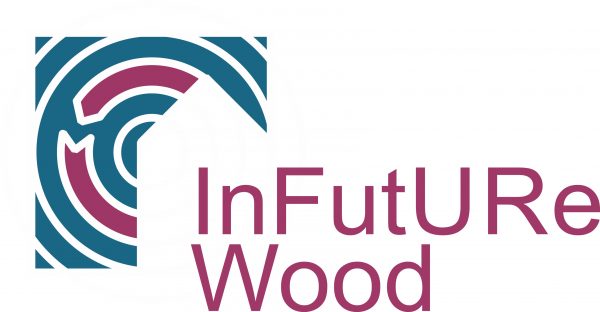Innovative Design For the Future – Use and Reuse of Wood (Building) Components

Coordinator: Karin Sandberg, RISE Research Institutes of Sweden, Sweden
karin.sandberg (at) ri.se
Other partners: ES, DE, FI, IE, SI, UK
Project duration: 03/2019-02/2022
Project abstract:
The InFutUReWood project aimed to answer the question: “How should we build today to be able to circulate tomorrow?” It started in March 2019 and ended March 2022, covering both the design of new buildings, and the reuse of timber from buildings already at the end of their life.
InFutUReWood was a European project within ERA-Net cofounded with ForestValue and funding agencies from each of the seven participating countries Finland, Germany, Great Britain, Ireland, Slovenia, Spain and Sweden. The main findings were:
- Three methods to adapt a design for deconstruction and reuse (DfD&R) were developed.
- Five case studies were carried out to illustrate design solutions adapted for reuse.
- Different ways to structure guidelines for deconstruction and reuse (Deconstruction Plans) were explored.
- Design for deconstruction and reuse DfDR can contribute to reduce the environmental impacts of timber-frame constructions for residential buildings.
- Mass timber products (cross laminated timber) from recovered timber were developed.
- Environmental benefits can be achieved from the use of recovered solid timber in high-quality CLT panels.
- Methods of assessment and assignment of design values for in-situ timber were researched.
- Potential material traceability methods were identified.
- Key factors in the demolition of building affecting the material recovery potential were identified.
- Quality criteria were developed against which recovered wood can be assessed. A stock- and flow model was developed, enabling future volumes of recovered wood to be predicted.
- Properties of recovered wood products including embedment strength was created.
- Technical and normative barriers to the strength grading of secondary timber were explored.
- A new framework for strength grading was developed, to complement the current ones.
Building machines are 91-95% the main influence on the environmental impacts of the building demolition stage.
Project website: link
Project YouTube channel: link
Project presentation at ForestValue kick-off seminar 23-24 May 2019: pdf
Stakeholder Article 1 InFutUReWood – Explaining the project’s overall aim
Stakeholder Article 2 InFutUReWood – Describes what is being done in WP5: properties of the recovered wood and grading of secondary timber for structural use
Stakeholder Article 3 InFutUReWood – Studying the demolition process of buildings
Stakeholder Article 4 InFutUReWood – Design for deconstruction and reuse (DfDR) of timber structures: Looking forward